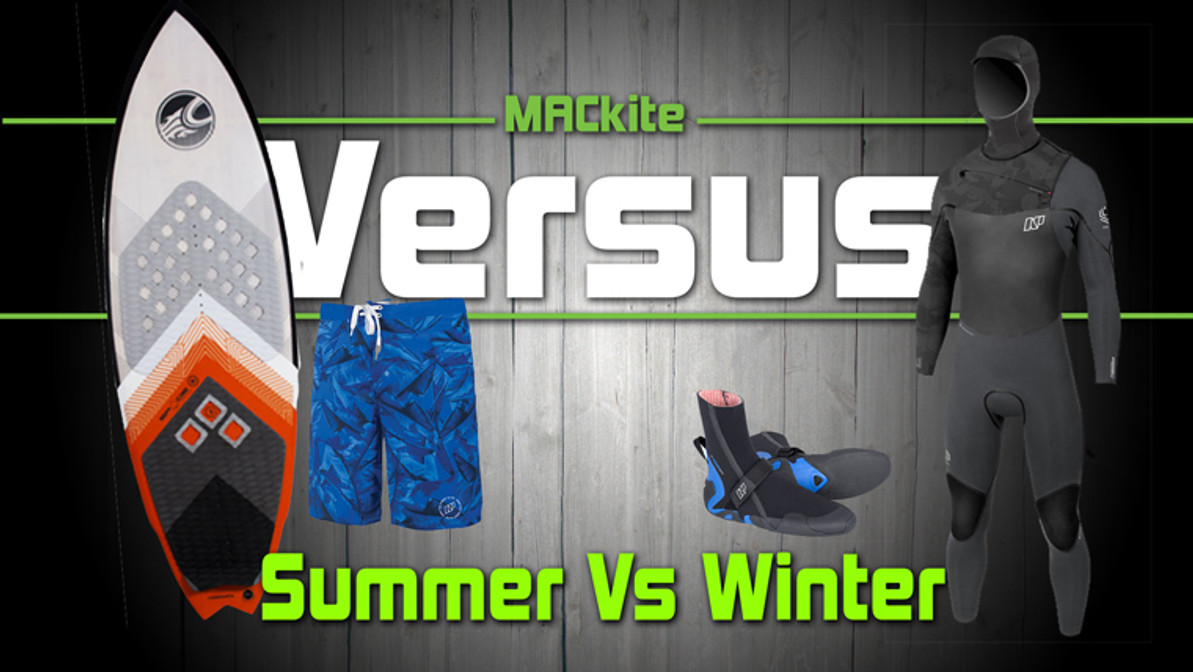Kiteboarding: Summer Vs Winter - Versus w/Rygo Ep 15
A lot of you probably don’t know this but in Michigan, during the winter our beaches get a decent amount of shelf ice along the coast. This weekend, we had a bit of a thaw, some sunshine and some decent weather for kiteboarding. Some of our shop riders like Logan Armstrong and Marc Hoesksma put some time in at our local slick. It got me thinking about how hardcore some riders can get just to get a session. Kiteboarding can seem overwhelming when it’s warm out but going out in the cold is a whole other level. It takes a lot more grit a lot more preparation and a bit of extra gear.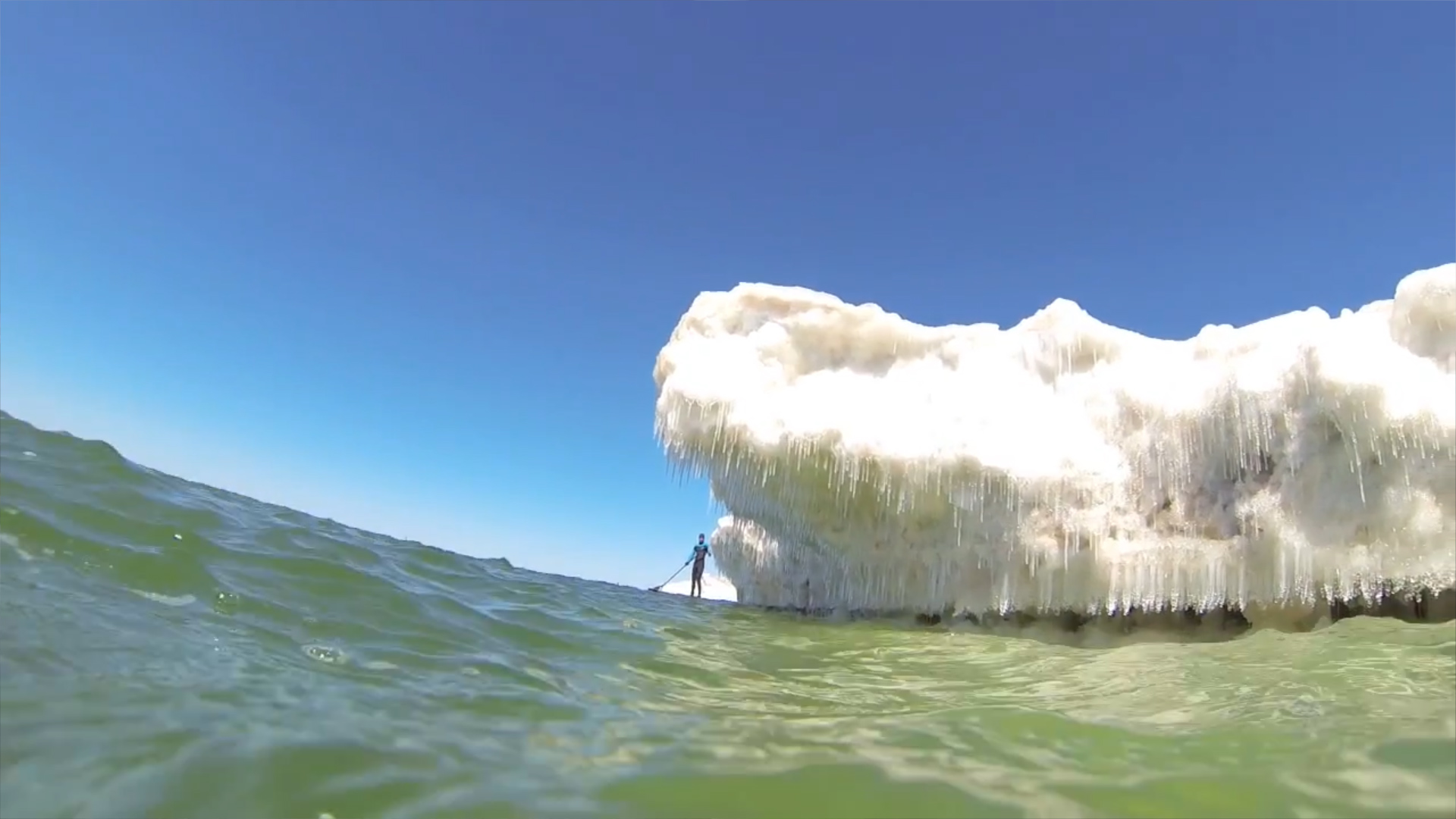
Pat Taylor of MACkite exploring the shelf ice on a standup
In this blog I’m going to break down:
- The prerequisites
- A few rules
- The gear you need
The first major difference is pretty obvious, You’re going to need to keep warm, in the summer if you ride somewhere with colder water, likely you’ll need a 3.2 mil if you’re lucky, you might live in a place where it’s all boardshorts all the time. Most of us don’t have that luxury.
Before I break down the gear needed, I wanted to go over some cold water basics.
Obviously in the summer you need to understand some weather basics, wind directions, avoid obvious dangers like storms and so on but in the winter, there is a whole other layer of knowledge needed.
Before you go.
Before you gear up and venture out into the cold I would say there are some absolute prerequisites here.
Start by asking yourself a few questions.
- What’s my ability level?
- Do I know how to recognize the warning signs of hypothermia?
- Am I able to stay situationally aware?
Ability Level
Regarding ability level, winter riding is reserved for experienced riders only.
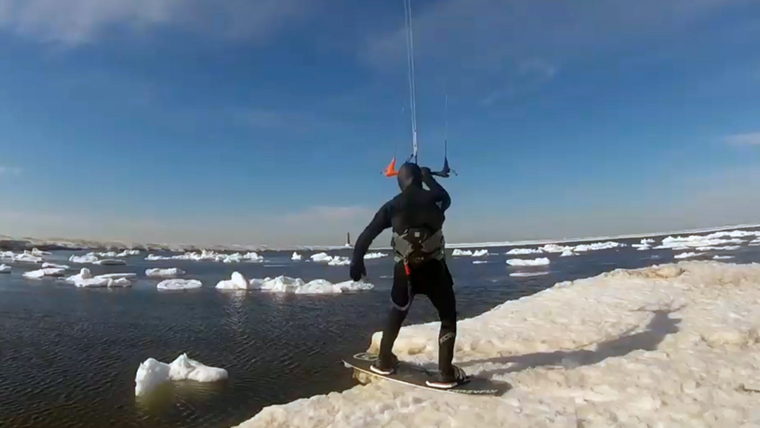
The reason being is that you really need to know how to handle yourself in various situations and on top of that if you’re new, chances are you'll spend a lot more time in the water than out of it.
Warm water at least above 60º degrees is a much better option for newer riders and even if you’re experienced, kiteboarding is all about progression and that means crashing. In the summer crashing can actually be a lot of fun as long as you’re not catching an edge!
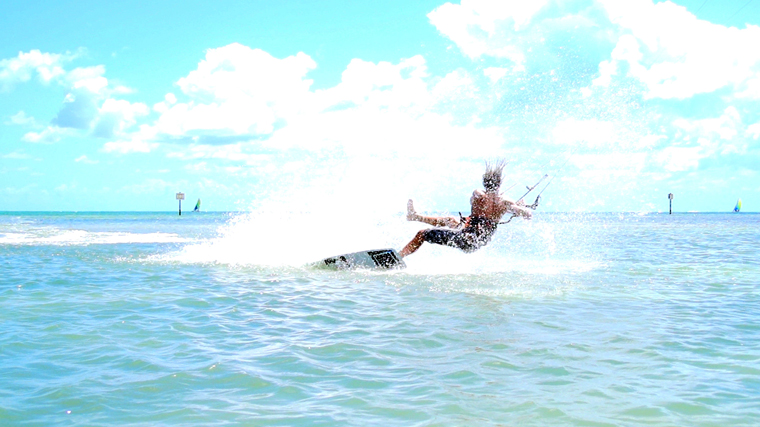
On those really warm days, sometimes a cannonball is all you need to cool off!
On top of that, energy levels are high! In the cold, you’re going to lose energy much more quickly. That said, There's definitely a rush to getting out in the cold. I’ll never forget my first cold water session waking up at dawn with some friends and pumping on a snowy beach. It’s an incredible feeling when you realise most people abandon the beaches for the winter while kiteboarders and surfers are enjoying nature all year round. When the water freezes over you just go snowkiting instead!
Do you know the warning of hypothermia?
So moving on, to get serious you should realize there are certain risks to going out in the cold.
You really need to know the warning signs of hypothermia so you can get out of the water the moment you experience any of these.
Everyone reacts differently, even under the same conditions but to name a few it starts with
- Shivering followed by
- Dull feeling or numb limbs
- Slurred speech
- Slower breathing
- fatigue physically and mentally
- Cold pale skin
- Confusion
- And eventually loss of consciousness.
Not to put the fear in you but you need to have a certain respect when pushing the boundaries.
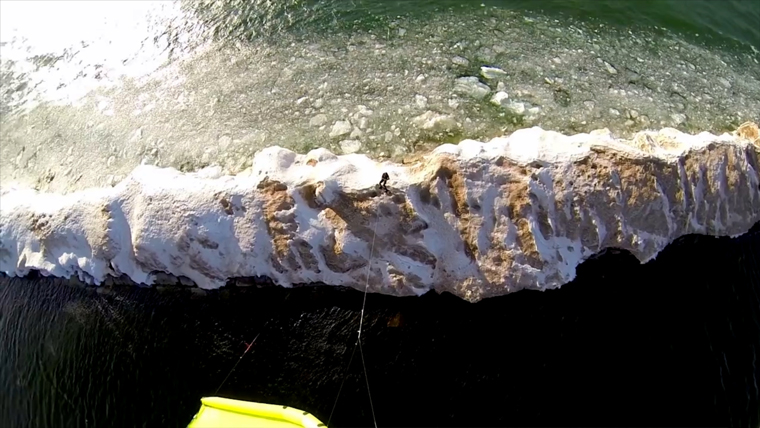
MACkite team rider Marc Hoesema walks a fine line at the breakwater.
Everyone reacts differently to the cold, even under the same conditions. Generally, children lose body heat more quickly than adults. Thin people lose body heat faster than overweight people. The expected survival times in the table are guidelines for the average adult, showing the rapid onset of hypothermia as water temperatures drop.
Cold Water Temperatures Decrease Time Before Exhaustion and Decrease Survival Time
| Water Temperature (ºF) | Expected Time Before Exhaustion or Unconsciousness | Expected Time of Survival |
| 32.5 | Under 15 minutes | 45 minutes |
| 32.5-40 | 15-30 minutes | 30-90 minutes |
| 40-50 | 30-60 minutes | 1-3 hours |
| 50-60 | 1-2 hours | 1-6 hours |
| 60-70 | 2-7 hours | 2-40 hours |
| 70-80 | 3-12 hours | 3 hours to Indefinite |
| Over 80 | Indefinite | Indefinite |
All that said, winter kiteboarding can be really fun but it’s critical to be mindful.
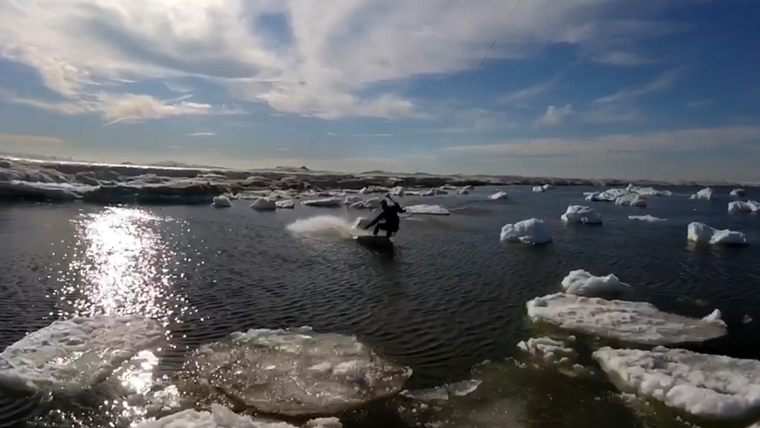
MACkite team rider Logan Armstrong taking advantage of a balmy January day kiteboarding lake Michigan.
Situational Awareness
Speaking of being mindful, this is where situational awareness comes into play.
- Make sure circumstances are right
- Asses everything
- Have a plan to get warm fast
- Never ride alone
- Don’t ride out far, you don’t want to have a long swim back in if something goes wrong.
So how do you even know if it’s safe to go out with the proper gear?
50 / 50 Rule
Well, the old rule of thumb was the 50/50 rule. If the air and the water add up to 100º F. Say 50º air 50º water or 60º air and 40º water, you were good to go. With modern wetsuits it’s probably more like a total of 70 or 80 now.
A large part of this comes down to what gear you’re using. Make sure you check what your wetsuit is rated for and play it safe. Hypothermia can happen in the summer but it’s far more unlikely. All it takes is for a shift in the weather when you’re not properly prepared. Kiteboarding in the summer you still need situational awareness but not on the same level as the winer. Cold water kiteboarding is really extreme.
Gear needed
What kind of gear does it take?
Like I said, in the summer all you might need is some sunscreen, a pair of board shorts or maybe a 2 mill top or a 3 mill wetsuit. Getting out in the cold takes a bit more gear.
Wetsuit
So first off you’ll need a thicker wetsuit. Something in the range of 5.4 to 6 mil and a built in hood is nice! If you don’t have a built in hood, you can get one to pair with your suit.
Thermalite
On top of that, I prefer to wear a thermal layer underneath. Thermalite is a good option and it’s not a far cry from thermal underwear except it’s meant for the water. It really does make a difference on those colder days!
Mittens
Next up you’ll need a pair of mittens. There’s a lot of options. From 5 finger gloves to mittens. I prefer the 3 finger claws. Mits tend to be warmer than gloves but I like to have a liberated finger while setting up. It’s just a good balance of functionality and warmth.
Depending on how cold the water is, you could opt for thinner glove too on those spring days where it’s not super cold.
Boots
Last up, you’re going to need some boots. There is a lot of options here but I would recommend a minimum of three mill Ideally 5 mill for those cold days. But there are a lot of options here as well. You can see most will have some padding on the bottom for durability and walking on shells or rocks. If you wear foot straps, these are ideal.
Riders who wear boots might want to check out some neoprene socks that don’t have the padding so they will actually fit.
Last but not least if you’re riding in the coldest of conditions you could consider a drysuit.
I’m not going to go into much detail on these as that would be an entire video in itself.
Closing
This was a bit of an impromptu topic but an important one.
The takeaway here is that kiteboarding in the summer is fun but kiteboarding in the winter is an adventure. It takes more preparation, more gear it can be dangerous and it’s reserved for capable experienced riders.
 Ryan (Rygo) Goloversic
Ryan (Rygo) Goloversic
Many people dream of quitting their job, traveling the world and pursuing their passions. Rygo is one of those people who pulled the trigger. About eight years into a postal career, he decided to change everything and travel as a freelance videographer & writer. This took him from coast to coast and a variety of countries. Nowadays you can catch him on the phones, doing lessons, or working on videos. Of course, he still makes a point to travel as often as possible. He is passionate about helping people and sharing the stoke with his customers and students alike.
Recent Posts
-
Kiteboarding | Crafting the Harlem Force Kite with Sustainability and Performance
Unparalleled Performance Meets Unmatched Sustainability The kiteboarding industry is on …24th Apr 2024 -
Duotone Ventis 2025 | What's New?
If you're familiar with Duotone's Ventis, you know its specialty is freeriding in light wind …23rd Apr 2024 -
Duotone Ventis D/LAB 2025 Overview
If you ride in an area with multiple light wind days and need a wing that'll let you get o …23rd Apr 2024

